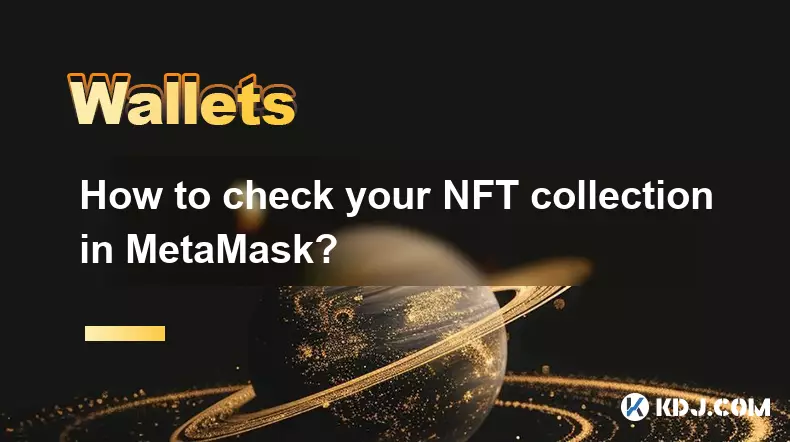-
 bitcoin
bitcoin $101752.865364 USD
-1.09% -
 ethereum
ethereum $3382.985899 USD
-1.38% -
 tether
tether $0.999658 USD
0.04% -
 xrp
xrp $2.272505 USD
-1.51% -
 bnb
bnb $989.089004 USD
0.14% -
 solana
solana $156.962612 USD
-3.08% -
 usd-coin
usd-coin $0.999776 USD
0.01% -
 tron
tron $0.290786 USD
-0.69% -
 dogecoin
dogecoin $0.174594 USD
-2.86% -
 cardano
cardano $0.560085 USD
-3.55% -
 hyperliquid
hyperliquid $40.023704 USD
-5.75% -
 chainlink
chainlink $15.324649 USD
-2.78% -
 bitcoin-cash
bitcoin-cash $493.576540 USD
-3.52% -
 zcash
zcash $571.320038 USD
-12.05% -
 stellar
stellar $0.280066 USD
-4.26%
How to set up a hidden wallet (passphrase) on Ledger Nano X?
The Ledger Nano X allows passphrase-protected hidden wallets, creating separate, secure wallet instances with plausible deniability and no trace of existence to outsiders.
Nov 02, 2025 at 11:01 pm

Understanding Hidden Wallets and Passphrases on Ledger Nano X
1. A hidden wallet, also known as a passphrase-protected wallet, leverages an additional word or phrase beyond the standard 24-word recovery seed. This extra layer is not stored on the device and acts as a sort of 'key' to unlock different wallet instances. Each unique passphrase creates a separate wallet with its own set of private keys and addresses.
2. The Ledger Nano X supports BIP39 and BIP44 standards, allowing users to generate multiple wallets using passphrases. When you enter a passphrase, the hardware wallet combines it with your original seed to derive a completely new wallet. Without the correct passphrase, access to that specific wallet is impossible, even if someone has physical possession of the device.
3. These hidden wallets are indistinguishable from regular wallets in terms of interface. To others, your device appears normal, holding only the default wallet. This feature enables plausible deniability — you can reveal one wallet while keeping others secret without raising suspicion.
4. It’s crucial to understand that losing your passphrase means permanent loss of access to the associated wallet. Unlike the recovery seed, there is no backup for the passphrase. Ledger does not store it, nor can it recover it. You must memorize it or store it securely offline.
5. Using a strong, unpredictable passphrase is essential. Avoid common words, phrases, or patterns. Ideally, the passphrase should be long and random, significantly increasing security against brute-force attacks.
Step-by-Step Setup Process
1. Begin by ensuring your Ledger Nano X is updated to the latest firmware version through Ledger Live. Connect the device using the USB cable and open the application on your computer.
2. Navigate to the settings menu within Ledger Live and enable the “Passphrase” option under the security settings. This activates the ability to input a passphrase directly on the device during startup.
3. Once enabled, disconnect the device and restart it. Upon rebooting, you’ll see two options: “Enter Pin” and “Enter Passphrase.” Choose “Enter Passphrase” to proceed with creating a hidden wallet.
4. Use the buttons on the device to manually type in your chosen passphrase. The Ledger Nano X processes this input locally; no data is transmitted externally. Confirm the entry carefully, as typos will result in a different wallet.
5. After entering the passphrase, the device will treat this combination as a unique wallet. You can now install apps like Bitcoin, Ethereum, or others and begin receiving funds to addresses derived from this passphrase-enhanced seed.
Managing Multiple Passphrase Wallets
1. Each time you enter a different passphrase, you gain access to a distinct wallet. For example, using “sunshine” unlocks one wallet, while “moonlight” opens another. Both coexist on the same device but remain entirely isolated.
2. Switching between wallets requires re-entering the respective passphrase each time you restart the device. There is no automatic switching mechanism, which enhances security by requiring intentional access.
3. Labeling wallets becomes important when managing several passphrase-derived accounts. While Ledger Live doesn’t natively support labeling based on passphrases, users often maintain personal records (offline) to track which passphrase corresponds to which purpose.
4. Consider using passphrases for specific use cases — one for trading, another for long-term savings, and perhaps a third for privacy-sensitive transactions. This compartmentalization limits exposure if one wallet is compromised.
5. Always test access to each wallet after setup. Send a small amount of cryptocurrency to a generated address and verify receipt. Then, restart the device and re-enter the passphrase to confirm consistent access.
Security Best Practices
1. Never store your passphrase digitally — avoid notes apps, cloud storage, or screenshots. Physical storage in a secure location, such as a safe or lockbox, is preferable.
2. Avoid using easily guessable information such as birthdays, pet names, or dictionary words. Instead, opt for randomly generated strings of characters or use a trusted offline tool to create a cryptographically secure passphrase.
3. Be cautious when entering your passphrase in public or under surveillance. Shoulder surfing or hidden cameras could compromise your hidden wallet. Perform these actions only in private, secure environments.
4. Regularly practice accessing your hidden wallet to ensure familiarity with the process and confirm that your memory of the passphrase remains accurate. Infrequent use increases the risk of forgetting critical details.
5. Combine passphrase protection with other security measures — use a strong PIN, keep firmware updated, and disable Bluetooth when not in use. Layered defenses enhance overall resilience against theft or unauthorized access.
Frequently Asked Questions
Can I change my passphrase later?No, the passphrase cannot be changed because it directly influences the cryptographic derivation of your wallet. If you want a new passphrase, you must create a new hidden wallet with the desired phrase and transfer funds manually.
What happens if I forget my passphrase?Forgetting your passphrase results in permanent loss of access to that specific wallet. No recovery method exists, even with the 24-word seed. The combination of seed and passphrase is required, and neither alone suffices.
Does enabling passphrase mode affect my main wallet?Enabling passphrase mode does not alter your original wallet. That wallet remains accessible by skipping the passphrase step during startup. The main wallet operates independently of any hidden wallets you create.
Can someone tell I’m using a hidden wallet?There is no technical indicator that reveals the use of a hidden wallet. To an observer, your Ledger appears to function normally. Only the user knows how many passphrases exist and which ones grant access to valuable assets.
Disclaimer:info@kdj.com
The information provided is not trading advice. kdj.com does not assume any responsibility for any investments made based on the information provided in this article. Cryptocurrencies are highly volatile and it is highly recommended that you invest with caution after thorough research!
If you believe that the content used on this website infringes your copyright, please contact us immediately (info@kdj.com) and we will delete it promptly.
- Ripple (XRP) in 2026: Hold or Fold? A Look at XRP's Future and Emerging DeFi Alternatives
- 2025-11-08 18:35:01
- Zcash ZEC Coin Price Explosion: From Privacy Niche to Center Stage
- 2025-11-08 18:55:01
- Berachain Price Prediction: Navigating the Honeycomb Hype in Crypto
- 2025-11-08 18:55:01
- Arthur Hayes, Gold, and Bitcoin: A Modern Monetary Trinity?
- 2025-11-08 19:15:01
- Shiba Inu's Next Move: Navigating a Shifting Market
- 2025-11-08 19:20:01
- Pakistan's Crypto Crossroads: Balancing Opportunity with Asset-Backed Realities
- 2025-11-08 19:20:01
Related knowledge

How to use MetaMask Portfolio to track assets?
Nov 08,2025 at 05:40am
Getting Started with MetaMask Portfolio1. Download and install the MetaMask mobile app from the App Store or Google Play. Open the app and select 'Imp...

How to check your NFT collection in MetaMask?
Nov 06,2025 at 08:20pm
Accessing Your NFTs in MetaMask Wallet1. Open the MetaMask browser extension or mobile app and ensure you are logged into your wallet account. Once in...

Why is the MetaMask swap feature failing?
Nov 06,2025 at 09:20pm
Understanding MetaMask Swap FailuresMetaMask, one of the most widely used cryptocurrency wallets, enables users to swap tokens directly within the int...

How to update the MetaMask extension in Chrome?
Nov 08,2025 at 07:39am
Updating the MetaMask extension in Chrome is a simple process that ensures you have access to the latest security features, performance improvements, ...

How to import an account into MetaMask using a private key?
Nov 07,2025 at 07:40am
Importing an Account into MetaMask with a Private KeyMetaMask is one of the most widely used cryptocurrency wallets, particularly within decentralized...

What to do if my MetaMask wallet was compromised?
Nov 06,2025 at 04:59pm
Immediate Steps to Take After a Compromised MetaMask Wallet1. Disconnect your device from any phishing websites immediately. If you clicked on a suspi...

How to use MetaMask Portfolio to track assets?
Nov 08,2025 at 05:40am
Getting Started with MetaMask Portfolio1. Download and install the MetaMask mobile app from the App Store or Google Play. Open the app and select 'Imp...

How to check your NFT collection in MetaMask?
Nov 06,2025 at 08:20pm
Accessing Your NFTs in MetaMask Wallet1. Open the MetaMask browser extension or mobile app and ensure you are logged into your wallet account. Once in...

Why is the MetaMask swap feature failing?
Nov 06,2025 at 09:20pm
Understanding MetaMask Swap FailuresMetaMask, one of the most widely used cryptocurrency wallets, enables users to swap tokens directly within the int...

How to update the MetaMask extension in Chrome?
Nov 08,2025 at 07:39am
Updating the MetaMask extension in Chrome is a simple process that ensures you have access to the latest security features, performance improvements, ...

How to import an account into MetaMask using a private key?
Nov 07,2025 at 07:40am
Importing an Account into MetaMask with a Private KeyMetaMask is one of the most widely used cryptocurrency wallets, particularly within decentralized...

What to do if my MetaMask wallet was compromised?
Nov 06,2025 at 04:59pm
Immediate Steps to Take After a Compromised MetaMask Wallet1. Disconnect your device from any phishing websites immediately. If you clicked on a suspi...
See all articles





















![The Graph Price Prediction [GRT Crypto Price News Today] The Graph Price Prediction [GRT Crypto Price News Today]](/uploads/2025/11/07/cryptocurrencies-news/videos/690d4df44fe69_image_500_375.webp)



















































